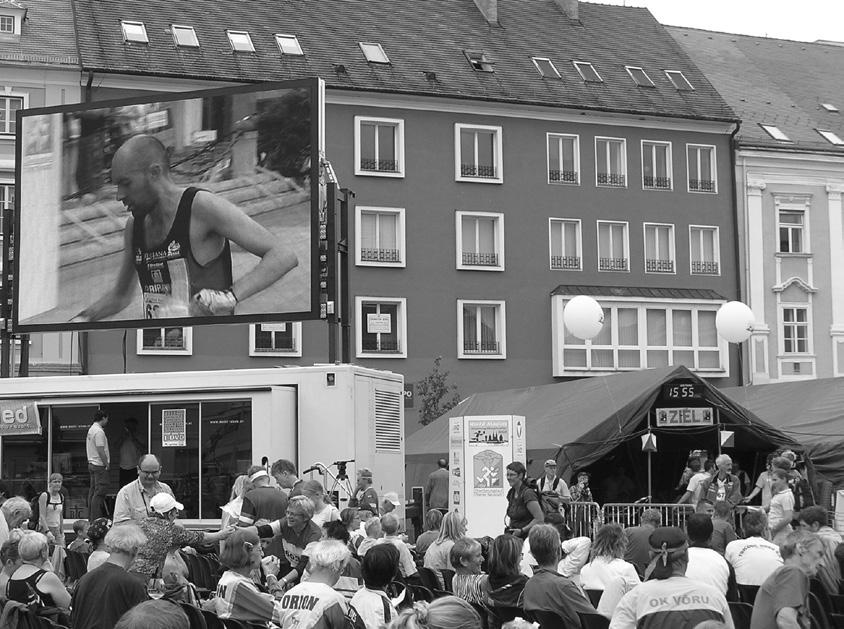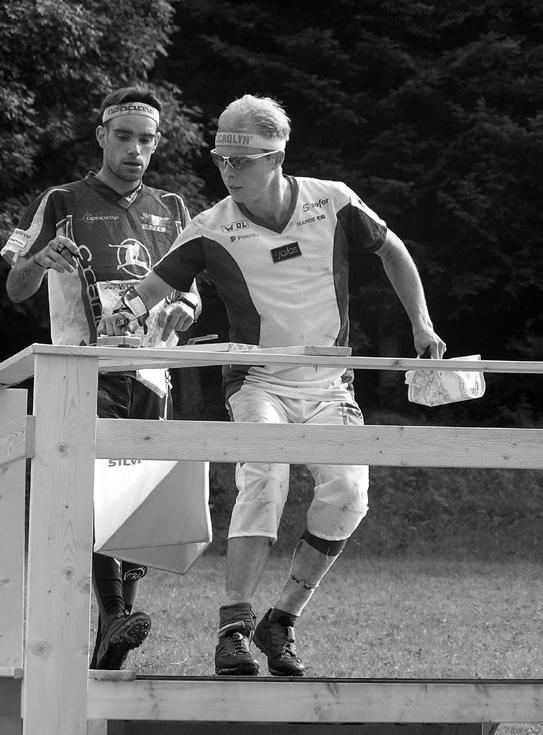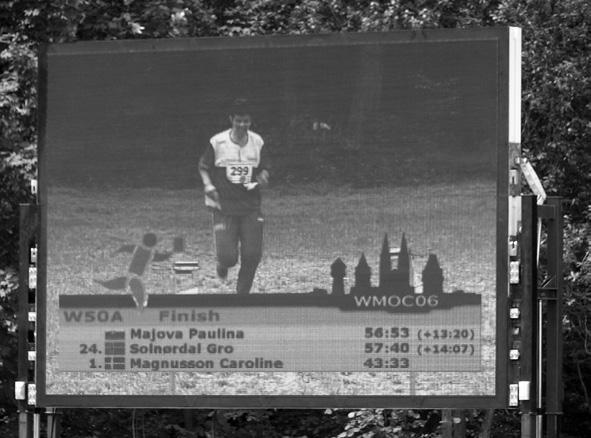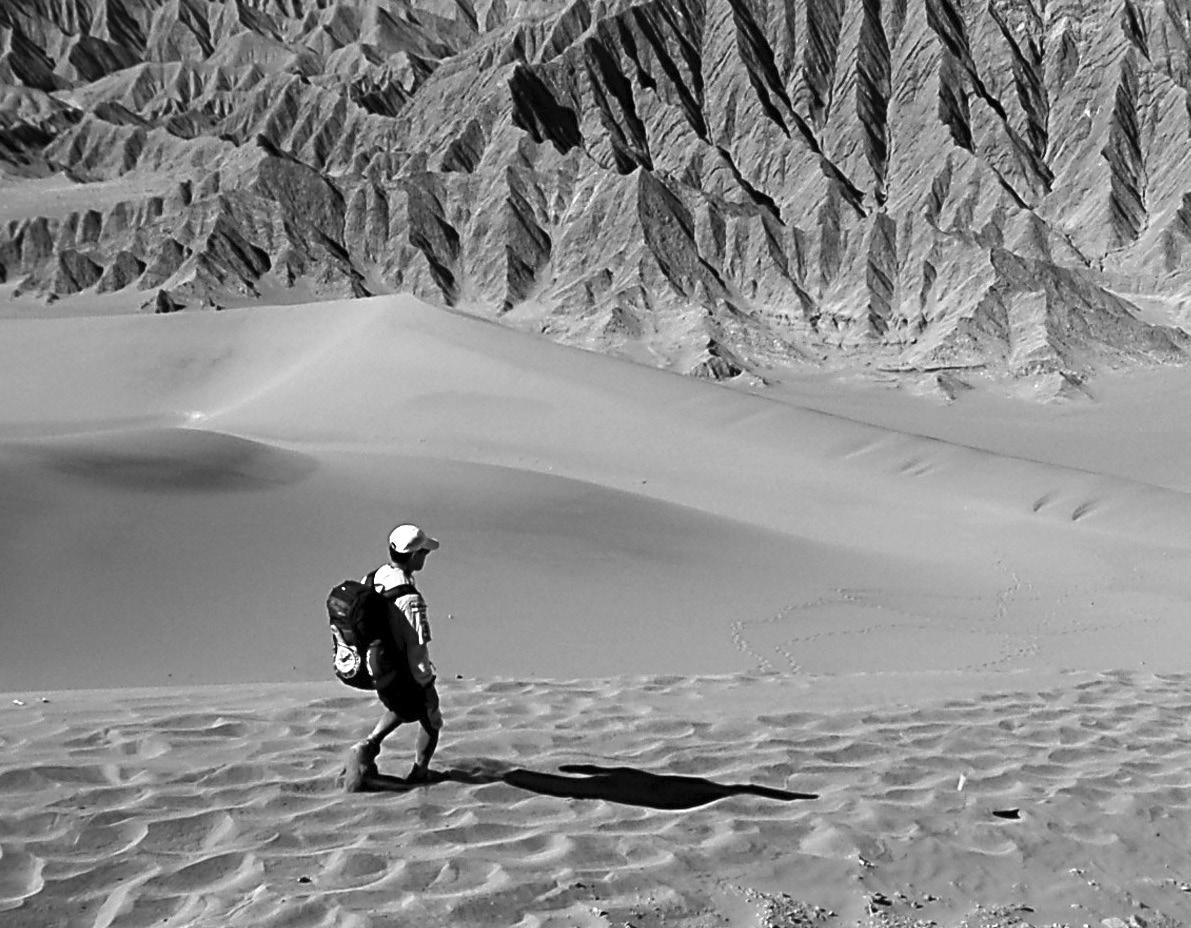
5 minute read
SPECTATOR ATTRACTION
Event arenas – a complete Sight & Sound Experience
Erik Borg
SpectatorAttraction
There’s no doubt that the major events held in Europe are becoming multi-media extravaganzas with live TV camera feed from the forest to the Big Screen erected in a spectator-friendly assembly arena, GPS positioning of competitors for the audience and instantaneous timing from points around the courses. All this is aimed at providing a spectacle for the audience gathered in the assembly arena. But where does all this leave lesser events which just don’t have the budget for such grand multimedia productions? Some say that Orienteering is not a spectator sport and that we don’t need spectator controls, open arenas with long finish lanes, etc – all of the orienteering course should be in the forest. But we must remember that the vast majority of spectators at these major events in Europe are themselves competitors, and it is the same for Orienteering events at any level. So why shouldn’t we try to provide as best as possible for those Orienteering spectators at our lesser events as well as at our major championships? Who knows – more spectator-friendly events might just attract more Orienteers to the bush events which have been suffering from declining attendances for some years. One important reason for the rise in popularity of the Sprint-O format is the increased level of spectator involvement. In this article first published in the IOF O-Zine (Sept’06), Erik Borg talks with Per Forsberg, the man behind multimedia event production in Scandinavia, including the recent World Orienteering Championships held in Denmark. Some of the principles of arena design he describes can be applied to most Orienteering events, big or small.
ORIENTEERING arenas should be small and compact. Spectators need to be close to the runners, and the site shouldn’t be too spacious. This is the view of the well-known orienteering commentator Per Forsberg. Forsberg works full-time as a professional commentator at major sporting events and on TV. The Swede was chief commentator at the World Championships in Denmark and was one of the key people in planning the arenas. “Overall I always have the ambition to create a compact arena, that is not to spread out the various features but to have them as close to each other as possible. Another key requirement is to use the Big Screen as a major focal point. The ambition at WOC in Denmark was that watchers should be able to see the Screen from both the main spectator areas and the cafes and eating places. A third important point was to have the spectator controls really close to the spectators; it is particularly important that spectators can recognise and hear the runners as they pass”, says Forsberg. The topography of the area has a considerable influence on how the assembly area can be set out. Forsberg believes that the arenas in Denmark were adequate in the way that one could see everything from one and the same place. “One could see the spectator control, the last control, the run-in, the finish and the Big Screen without having any need to move”, says Per. It is an enormous task to plan and set up an arena of World Championships class. Many people contribute to planning the layout. Amongst others, the course planners are important; they need to create courses which pass through the arena at a suitable point on each course. “In retrospect I consider that at WOC in Denmark we were able to build up arenas which were overall of high class, with the spectators kept in focus when we were designing the layout”, says Per. Have you any tips for those who wish to organise spectatorfriendly orienteering events? How do you create atmosphere and excitement? “The biggest mistake, often made, is to spread the various features out far too much. Think ‘compact’. When we begin to think about atmosphere, it is clear that this depends on more than just the arena layout. The commentary is important,
but also what kind of race it is, the race’s importance and which runners are taking part. In this context I should also say that it is not just the commentary that is important; a good speaker needs a good sound system – often this has not been the case”, says the WOC commentator.
Orienteering is a TV sport!


At the end of April Per Forsberg was the Program Director for the longest ever direct sports transmission in Sweden. He believes in orienteering as a TV sport, and reckons that the sport can have much higher selfbelief. “In the future we (orienteering) must dare to stand up for our sport much better than we do today. Far too often we stand with our cap in our hands and simply wait for sponsors and TV to come to us, but they don’t do that. We must get out and tell them about ourselves, and sell ourselves too. Orienteering has a modern outlook, it is in many ways a high-tech sport which stands out above the rest. I’m thinking of electronic punching, GPS-tracking and so on”, says Forsberg.
Orienteering has possibilities for TV?
“Absolutely. In the last year we have shown that orienteering functions perfectly as a direct-transmission TV sport (Tiomila 2006 in Sweden). So we must continue to work and develop our possible TV projects with care. I believe more than anything that Relays are best suited to TV just now, but Sprint and Middledistance also work”, says Per. Forsberg believes that people experienced in orienteering have to produce the TV programs. “Orienteering is difficult to produce. Our runners are not specially well-known amongst other than ourselves, which makes it difficult for even a skilled and experienced producer to appreciate everything if he has no knowledge of orienteering”, he says. Additionally, Per believes that two criteria must be met for orienteering to become a big sport. The first – it must become Olympic. Secondly, we must work to develop further the big events like World Championships and the World Cup.
Winner, Jani Lakanen, punches the spectator control in the Long-distance event at WOC in Denmark.
“Arenas must be professionally designed, we need to have picture production for a big screen, etc. It is extremely important for the IOF and for everyone that this happens”, he says.








